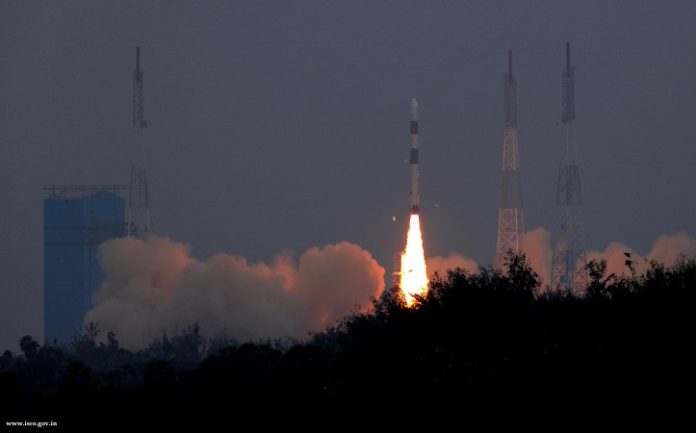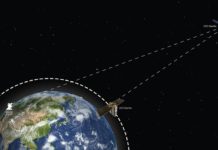Today, at 9:58 a.m. IST (GMT +5:30), India’s space agency ISRO launched its Polar Satellite Launch Vehicle (PSLV) from the Satish Dhawan Space Centre (SDSC) in Sriharikota. The mission, known as PSLV-C43 to mark the 43rd flight of the rocket, orbited ISRO’s HysIS earth observation satellite, 1 microsatellite, and 29 nanosatellites, making a total of 31 satellites launched.
For this mission, ISRO used a four-stage configuration of the PSLV, with a core alone version that makes it the lightest version of the rocket. The rocket’s fourth stage was restartable, allowing ISRO to inject HysIS into a 636 km polar Sun Synchronous Orbit (SSO), before changing its trajectory to deploy the other satellites into a 504 km orbit.
HysIS, the launch’s main payload, has a mass of 380kg and a design life of 5 years. Its primary mission is to study the earth’s surface in visible, near infrared and shortwave infrared regions of the electromagnetic spectrum. The satellite was based on ISRO’s Mini Satellite-2 (IMS-2) bus, and carries a hyperspectral imager. It will be part of ISRO’s space applications programme and will be used for national development and military purposes.
The piggyback payloads of today’s launch comprise 30 satellites from 8 countries, including 16 Flock satellites from Earth imaging company Planet and 4 Lemur satellites for Spire, each carrying a Vessel Automatic Identification System (AIS) for tracking ships.
Two nanosatellites were launched for companies based in Asia-Pacific, including the first nanosatellite to be deployed in the PSLV-C43’s second orbit injection – this was Malaysia’s InnoSAT-2, a 3U Earth Observation Cubesat developed by Astronautic Technology Sdn Bhd (ATSB). InnoSAT-2 carries a dosimeter, a CMOS camera and an experimental reaction wheel. The satellite’s bus was built locally in Malaysia, and is the third satellite developed by ATSB after TiungSAT-1 (developed with the help of Surrey Satellite Technology and launched in 2000) and RazakSAT (launched in 2009). ATSB is a government-owned company whose mission it is to develop Malaysia’s space technology and applications, and has so far been the contractor for the country’s space agency Angkasa.
Also aboard the PSLV was Centauri-1, a 3U Cubesat belonging to Australian Internet of Things (IoT) company Fleet Space Technologies. This is Fleet’s third satellite in orbit, with the first two – both from its Proxima series – having been launched earlier this month using Rocket Lab’s Electron vehicle. Fleet will also soon be launching its fourth satellite, Centauri-2, in SpaceX’s delayed SSO-A mission, now scheduled to take place on December 1.







